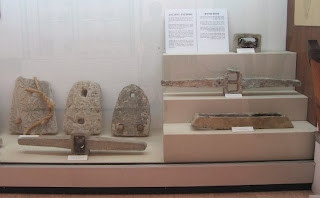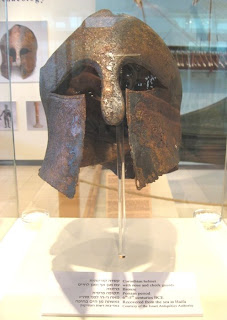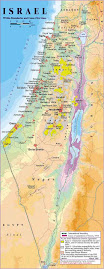Varda, the head of the library, took me on a tour, a few days after we arrived.

After entering on the right one sees awards given to soldiers from town.


The floor has a beautiful map of Israel under glass. The beauty is not diminished even though the map marks where military and terrorist attacks have taken place during the existence of the State of Israel. Unfortunately, I was not able to take a picture of it.
The rest of the walls, have two-deep photos of the local citizens who have died, from right to left in chronological order. You can also see flags of Israel and the military.
 As you can see, the lighting is subdued.
As you can see, the lighting is subdued.The first two men fell during the War of Independence, before Kiryat Malachi (first as Castina) came into existence.
 Itamar, above, died in 1948, and Yehezkiel fell in 1950.
Itamar, above, died in 1948, and Yehezkiel fell in 1950.1967 awakened me to Israel, so I've included pictures of those who fell in the 6-day war.

I was a member of a kibbutz on the Golan Heights in 1973. Along with the other women and children, my 4-month-old daughter Timna and I were evacuated under fire after dark the first day of the Yom Kippur War, so that war had a huge significance in my life. Here are photos of men who fell in that war from Kiryat Malachi.
 Armon S. and Yehezkiel Nissim
Armon S. and Yehezkiel Nissim Ofir M. and David A. both fell in 2001. Ofir died in a terrorist attack (a pigua). He had graduated from AMIT high school in Kiryat Malachi. His English vocabulary level was so great that his teacher said that he was like an English dictionary. In his memory, donations from the Seattle and Portland Federations 3 years ago helped purchase special, expensive English dictionaries for top students taking the 5 - point English Bagrut exam. (More dictionaries are now needed, BTW.)
Ofir M. and David A. both fell in 2001. Ofir died in a terrorist attack (a pigua). He had graduated from AMIT high school in Kiryat Malachi. His English vocabulary level was so great that his teacher said that he was like an English dictionary. In his memory, donations from the Seattle and Portland Federations 3 years ago helped purchase special, expensive English dictionaries for top students taking the 5 - point English Bagrut exam. (More dictionaries are now needed, BTW.) Gad Rachamim feel in 2002. He was the brother of Nir Rachamim, the former president of the Kiryat Malachi Youth Council, and a counselor to Palm Springs and Seattle the summer of 2007.
Gad Rachamim feel in 2002. He was the brother of Nir Rachamim, the former president of the Kiryat Malachi Youth Council, and a counselor to Palm Springs and Seattle the summer of 2007.I found the room quite moving. If you get to Kiryat Malachi, this room is a "must" to visit.


























































